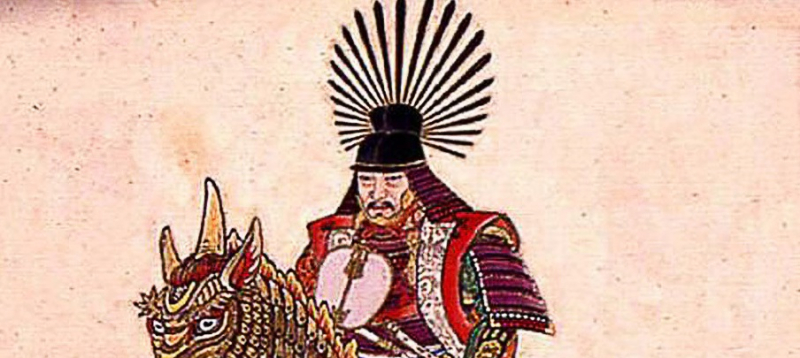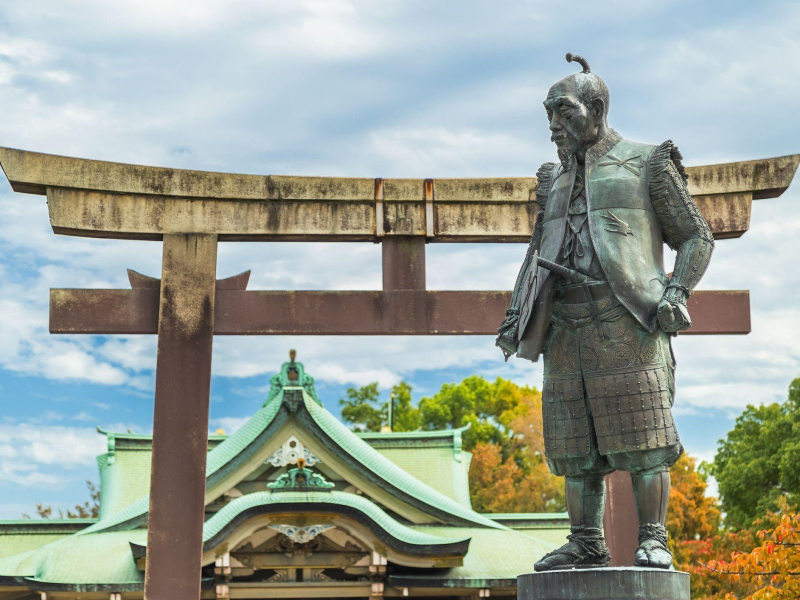Toyotomi Hideyoshi
Toyotomi Hideyoshi (豊臣 秀吉, 17 March 1537 - 18 September 1598), also known as Kinoshita Tōkichirō and Hashiba Hideyoshi, was a Japanese samurai and daimyo (feudal lord) of the late Sengoku period who is regarded as Japan's second "Great Unifier." Hideyoshi is among the most important historical figures in Japan.
Hideyoshi rose from humble beginnings as a retainer of the powerful lord Oda Nobunaga to become one of Japan's most powerful men. After the Honn-ji Incident in 1582, Hideyoshi took over as Nobunaga's successor and continued Nobunaga's campaign to unite Japan, which led to the end of the Sengoku period. By the mid-1580s, Hideyoshi had become the de facto leader of Japan, holding the prestigious positions of Chancellor of the Realm and Imperial Regent. Hideyoshi launched Japanese invasions of Korea in 1592, with initial success, but eventual military stalemate hurt his reputation before his death in 1598. Tokugawa Ieyasu displaced Hideyoshi's young son and successor Toyotomi Hideyori at the Battle of Sekigahara in 1600, resulting in the establishment of the Tokugawa Shogunate.
Hideyoshi's reign spans the majority of Japan's Azuchi-Momoyama period, which is named after his castle, Momoyama Castle. Hideyoshi left an indelible mark on Japan, including Osaka Castle, the Tokugawa class system, the prohibition on samurai possessing weapons, and the construction and restoration of numerous temples, some of which can still be seen in Kyoto.












